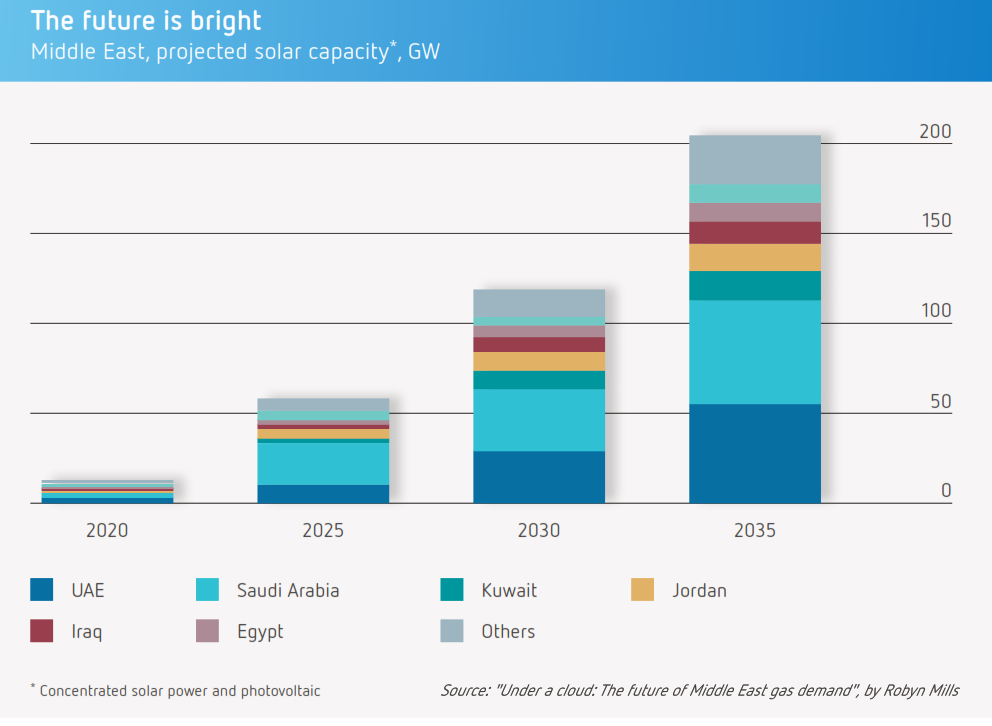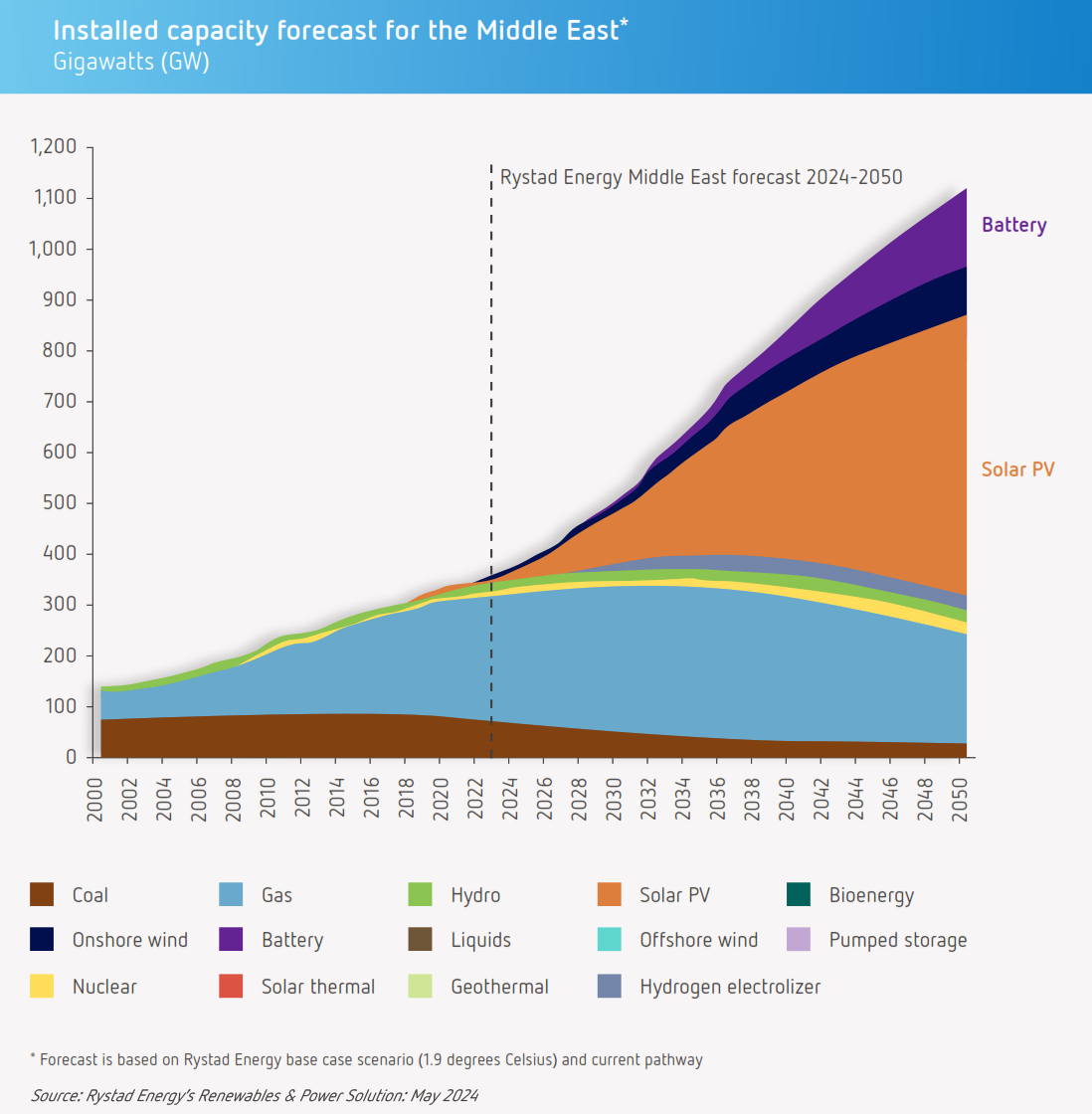The Middle East’s Solar Revolution: Powering a New Era in Energy
October 3, 2024
The Middle East has long been synonymous with oil and gas, but the region is undergoing a remarkable energy transformation. Governments and private investors are now turning toward solar power to diversify energy sources and meet both domestic needs and international climate commitments. The Middle East Solar Market Report by Rystad Energy provides a clear picture of the region’s ambitions and achievements in this area.
Solar Capacity on the Rise
Solar power is becoming a cornerstone of the energy strategies in countries like Saudi Arabia, the UAE, Oman, and Jordan. By 2030, the Middle East is projected to achieve a solar capacity of 55 GW, with Saudi Arabia targeting 58 GW of renewable energy, largely driven by solar, under its Vision 2030 plan. The UAE is also making significant strides, with the Mohammed bin Rashid Al Maktoum Solar Park aiming to reach 5 GW by 2030, making it one of the largest solar parks in the world.


Mega Solar Projects in the MENA Region
The Middle East is host to several of the world’s most ambitious solar energy projects. These initiatives are driving both capacity and technological innovation in the solar sector. Some of the most notable projects include:
- Al Shuaiba PV IPP (Saudi Arabia) – 2.6 GW
- Benban Solar Park (Egypt) – 1.8 GW
- Noor Abu Dhabi (UAE) – 1.17 GW
- Sudair Solar PV (Saudi Arabia) – 2 GW
- Mohammed bin Rashid Al Maktoum Solar Park (UAE) – Target 5 GW by 2030
These projects demonstrate the scale and commitment of Middle Eastern nations to solar power, cementing the region’s place in the global renewable energy landscape.
Government Policies Driving Solar Adoption
Governments across the Middle East have taken bold steps to create an enabling environment for solar energy. Policies such as feed-in tariffs, tax incentives, and Power Purchase Agreements (PPAs) have significantly reduced the financial risk associated with solar projects. For instance, Jordan has attracted significant foreign investments thanks to its transparent regulatory frameworks and supportive renewable energy policies.
Saudi Arabia’s Vision 2030 includes substantial investment into renewable energy projects, backed by its Public Investment Fund (PIF), which aims to accumulate 40 GW of installed PV capacity by 2030.
Technological Innovations Boosting Solar Efficiency
The Middle East’s harsh climate presents unique challenges for solar power generation, particularly high temperatures and dust. In response, the region is adopting advanced solar technologies to enhance efficiency. Bifacial solar panels, which capture sunlight on both sides, are becoming more popular. Additionally, the use of battery energy storage systems (BESS) is helping to stabilize the grid by storing excess solar power for use during peak demand or nighttime hours.
Hybrid solar projects, combining solar PV with storage and other renewable energy sources, are also gaining momentum, ensuring more stable and reliable power supply.
Overcoming Challenges in Solar Development
Despite its potential, solar energy development in the Middle East is not without challenges. High temperatures can reduce the efficiency of solar panels, and infrastructure development still lags behind the rapid growth in capacity. However, with solar costs continuing to fall, these obstacles are becoming more manageable. The Al Dhafra project in the UAE recently set a world record for the lowest solar tariff at $0.0135/kWh, highlighting how cost-competitive solar energy is becoming in the region.
A Bright Future for Solar Energy in the Middle East
Solar energy is reshaping the energy landscape in the Middle East. With ambitious goals, innovative projects, and strong government backing, the region is positioning itself as a global leader in solar power. As the world continues to shift towards cleaner, more sustainable energy sources, the Middle East’s solar revolution is a critical component of this transformation.
References:
- Middle East Solar Market Report, Rystad Energy
Search
RECENT PRESS RELEASES
Related Post



